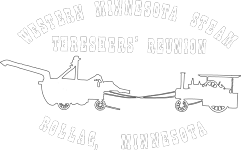The lye soap sold at the show is originally from the Lewis Lye container. We have converted it to weights from the original recipe which used volumes. I'm listing the converted recipe first, following that is the original recipe with notes by Judith Hanson.
93 oz. lard or tallow (beef or bear)
12.2 oz lye
19 to 30 oz water
Yup, that's it! Just fat, lye and water Make sure you read the temperature guidelines below. If you have questions, please send me a message on the forum.
Make sure you read the temperature guidelines below. If you have questions, please send me a message on the forum.
Lye Soap
Dissolve 1 can lye (the original cans were 12 ounces-Sarah) in 5 cups old water. Stir well until dissolved. If desired add 2 tablespoons ammonia and 2 tablespoons Borax to lye mixture.
Melt fat and measure 13 cups. Add lye to fat slowly, stirring all the while. It will become white and thick When it is the consistency of cake batter, it is ready to pour into a pan or form. A wooden peach crate is good. Line the form with a cloth wrung out of cold water before pouring into it, Cover or keep warm. Cut into bars and store so air can reach it, but avoid drafts. Temperature is very important in making soap. Following are some important temperature guidelines:
Use enamel ware or glass utensils for soap making. Use rubber gloves. Avoid breathing the lye fumes. Do your soap making in a well ventilated place. Judith Hanson
93 oz. lard or tallow (beef or bear)
12.2 oz lye
19 to 30 oz water
Yup, that's it! Just fat, lye and water
Lye Soap
Dissolve 1 can lye (the original cans were 12 ounces-Sarah) in 5 cups old water. Stir well until dissolved. If desired add 2 tablespoons ammonia and 2 tablespoons Borax to lye mixture.
Melt fat and measure 13 cups. Add lye to fat slowly, stirring all the while. It will become white and thick When it is the consistency of cake batter, it is ready to pour into a pan or form. A wooden peach crate is good. Line the form with a cloth wrung out of cold water before pouring into it, Cover or keep warm. Cut into bars and store so air can reach it, but avoid drafts. Temperature is very important in making soap. Following are some important temperature guidelines:
Fat from lard and tallow fat 100 lye 75 to 80
Fat from all tallow fat 120 lye 90
Lard and other soft fats fat 85 lye 75
Fat from all tallow fat 120 lye 90
Lard and other soft fats fat 85 lye 75




 Will have to stop by earlier next time... And, thank you
Will have to stop by earlier next time... And, thank you